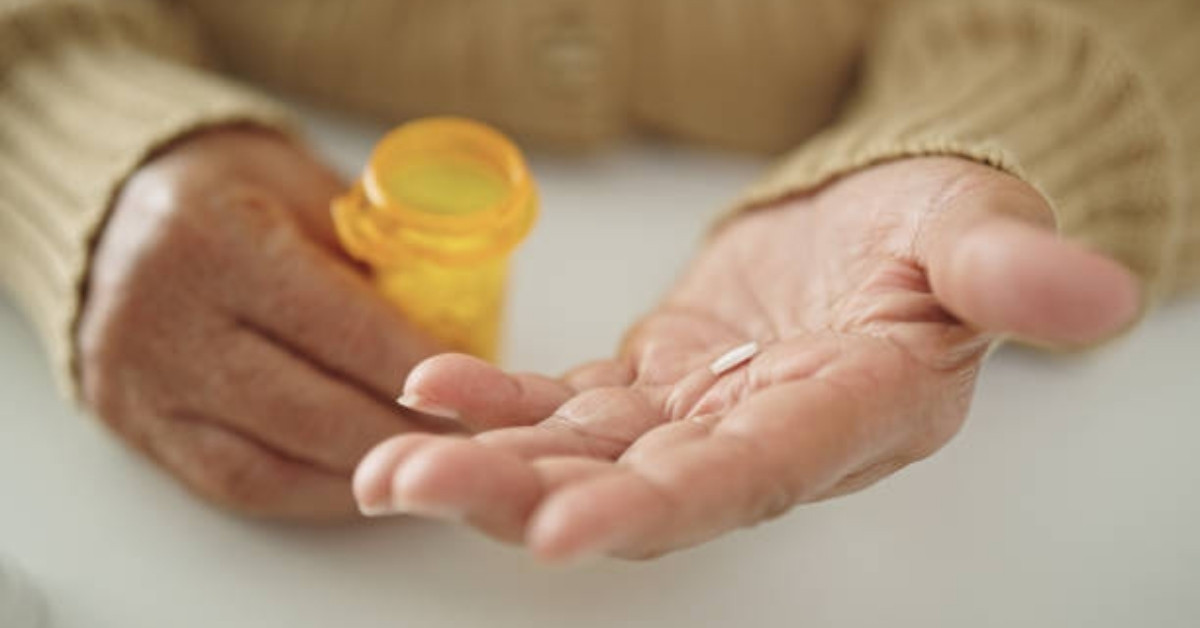Understanding Drug Addiction Support
Drug addiction is a complex condition that requires comprehensive support for effective recovery. Medications and devices play a significant role in helping individuals overcome addiction and facilitate a successful path to sobriety.
Importance of Medications and Devices in Recovery
Medications are essential in managing both the physiological and psychological aspects of addiction. They can help reduce cravings and withdrawal symptoms, making it easier for individuals to focus on their recovery. Devices, on the other hand, can enhance treatment outcomes by providing additional support and monitoring.
The integration of medications and supportive devices can lead to better adherence to treatment plans and improved success rates in overcoming addiction. Understanding the various available options is crucial for developing effective recovery strategies.
| Type | Purpose | Example |
| Medications | Reduce cravings and manage withdrawal symptoms | Naltrexone, Methadone |
| Support Devices | Provide monitoring and additional support | Mobile apps, Wearable tech |
Overview of Treatment Options
Treatment for drug addiction typically involves a combination of therapies, which may include medications, counseling, support groups, and rehabilitation programs. Individuals may benefit from an individualized approach that considers their unique needs, circumstances, and the substance involved.
The following are common treatment options that may be utilized in drug addiction support:
| Treatment Method | Description |
| Behavioral Therapy | Focuses on modifying harmful behaviors |
| Medication-Assisted Treatment (MAT) | Combines medications with therapy |
| Support Groups | Provides community support from others in recovery |
| Detoxification Programs | Helps individuals safely withdraw from substances |
Understanding the significance of medications and devices, along with available treatment options, enables individuals and their support systems to make informed decisions as they navigate the challenging journey of recovery from drug addiction.
Medications for Drug Addiction
Medications play a crucial role in the treatment of drug addiction. They can help reduce cravings, manage withdrawal symptoms, and support long-term recovery. Here is a closer look at these types of medications.
Medications to Reduce Cravings
Certain medications are designed specifically to decrease cravings for drugs. These medications work by affecting brain chemistry and reducing the desire to use addictive substances.
| Medication Type | Purpose |
| Opioid Antagonists | Block the effect of opioids and reduce cravings |
| Partial Agonists | Provide a mild effect to reduce cravings while avoiding withdrawal |
| Naltrexone | Reduces the urge to drink alcohol and use opioids |
Medications to Manage Withdrawal Symptoms
Withdrawal can be challenging and uncomfortable. Medications aimed at alleviating these symptoms can provide significant relief during the detoxification phase of recovery.
| Medication Type | Withdrawal Symptoms Targeted |
| Benzodiazepines | Help manage anxiety and agitation |
| Clonidine | Helps reduce symptoms such as sweating and anxiety |
| Methadone | Assists with opioid withdrawal by mimicking opioid effects |
Medications for Long-Term Recovery
To support sustained recovery, certain medications assist in maintaining sobriety over time. These long-term solutions can help prevent relapse.
| Medication Type | Purpose |
| Acamprosate | Helps individuals maintain sobriety from alcohol |
| Disulfiram | Causes adverse reactions when alcohol is consumed, deterring use |
| Buprenorphine | Reduces cravings and withdrawal symptoms in opioid addiction |
By understanding the various medications available for treating drug addiction, individuals and healthcare providers can work together to develop effective treatment plans that address the unique needs of each person in recovery.
Devices for Drug Addiction Support
The journey to recovery from drug addiction can be supported through various devices designed to assist individuals in managing their treatment. Understanding these devices is essential for those seeking effective tools for their recovery process.
Overview of Drug Addiction Support Devices
Support devices for drug addiction can broadly be categorized into technological and non-technological options. These devices focus on improving overall treatment effectiveness, helping individuals manage cravings, monitor progress, and enhance coping mechanisms.
| Device Type | Description |
| Technology-Based Devices | Devices utilizing technology for support and monitoring. |
| Non-Technological Devices | Traditional tools and resources that provide support. |
Technology-Based Support Devices
Technology-based support devices play a significant role in modern addiction recovery. They often incorporate features like monitoring and feedback to help users stay on track with their recovery goals. Examples include apps for tracking progress, wearable devices that provide reminders, and telehealth platforms that enable virtual counseling sessions.
| Device Example | Functionality |
| Mobile Apps | Track progress and manage cravings. |
| Wearable Devices | Reminders and alerts for appointments. |
| Telehealth Platforms | Access professional support remotely. |
Non-Technological Support Devices
Non-technological support devices include traditional tools that aid individuals in their recovery journey. These devices often focus on peer support, education, and resource accessibility. Examples include journals for self-reflection, support group materials, and educational pamphlets about addiction.
| Device Example | Purpose |
| Journals | Encourage self-reflection and tracking thoughts. |
| Support Group Materials | Provide information and guidance for group sessions. |
| Educational Pamphlets | Increase awareness about addiction and recovery options. |
The combination of technology-based and non-technological devices can create a comprehensive support system for those facing drug addiction. Each type serves a distinct purpose in the recovery process, contributing to a holistic approach to treatment.
Combination Therapy Approaches
Combination therapy for drug addiction involves using both medications and support devices in tandem to enhance recovery outcomes. This integrated approach can address various aspects of addiction, leading to more comprehensive support for individuals seeking recovery.
Integrating Medications and Devices for Optimal Support
Integrating medications and devices allows for a holistic treatment strategy. The synergy created by combining these resources can lead to improved management of cravings, withdrawal symptoms, and overall well-being.
| Treatment Type | Purpose | Example Use Case |
| Medications | Reduce cravings and manage withdrawal symptoms | Medications taken daily |
| Technology-Based Devices | Provide reminders and foster accountability | Smartphone apps for reminders |
| Non-Technological Support Devices | Offer emotional support and practical assistance | Support groups or counseling |
This combination can also help bridge the gap between physical and psychological aspects of addiction recovery. Using support devices alongside prescribed medications can lead to better adherence to treatment plans.
Benefits of Combination Therapies
Utilizing combination therapies offers several advantages that can significantly enhance recovery efforts:
| Benefit | Description |
| Comprehensive Care | Addresses both physical and psychological aspects of addiction |
| Improved Outcomes | Higher rates of success in overcoming addiction compared to single-method treatments |
| Enhanced Motivation | Devices provide reminders and support, fostering accountability |
| Customizable Treatment | Able to tailor interventions based on individual needs and preferences |
This multi-faceted approach can facilitate long-term recovery and help individuals navigate their journey more effectively. Integrating various support systems ensures comprehensive care that addresses underlying issues and fosters resilience against relapse.
Role of Healthcare Professionals
Healthcare professionals play a vital role in the treatment and recovery process for individuals facing drug addiction. Their expertise helps ensure that patients receive appropriate care and support.
Importance of Medical Supervision
Medical supervision is essential for individuals undergoing treatment for drug addiction. Professionals are equipped to monitor progress, manage side effects, and adjust treatment plans as necessary. This oversight can help prevent potential complications and ensure safety during the recovery journey.
| Aspect | Importance |
| Monitoring | Tracks physical and mental health |
| Side Effect Management | Adjusts medications as needed |
| Safety | Prevents complications and risks |
Working with Healthcare Providers
Collaboration with healthcare providers is crucial in developing an effective treatment plan. Professionals typically include doctors, therapists, and addiction specialists. They work together to provide a comprehensive approach to recovery that addresses both physical and mental health needs.
| Healthcare Provider Type | Role |
| Doctor | Prescribes medications and oversees medical care |
| Therapist | Provides counseling and emotional support |
| Addiction Specialist | Guides recovery strategies and interventions |
Individualized Treatment Plans
Individualized treatment plans are tailored to meet the unique needs of each patient. These plans consider various factors, including the type of substance used, the severity of addiction, and the individual’s overall health. Customized approaches help improve the chances of successful recovery.
| Treatment Plan Factor | Description |
| Substance Type | Addresses specific withdrawal and craving issues |
| Severity of Addiction | Determines the intensity and type of interventions needed |
| Co-occurring Disorders | Incorporates treatment for mental health issues alongside addiction |
By involving healthcare professionals, individuals can receive the comprehensive support necessary for effective recovery from drug addiction. Their roles are essential in navigating treatment options, monitoring progress, and providing ongoing support throughout the recovery process.
Sources
https://www.rosewoodrecovery.com/what-medications-and-devices-help-treat-drug-addiction
https://www.therecoveryvillage.com/fda-approves-medical-device-treat-addiction-withdrawal-symptoms
https://www.niagararecovery.com/what-medications-and-devices-help-treat-drug-addiction










